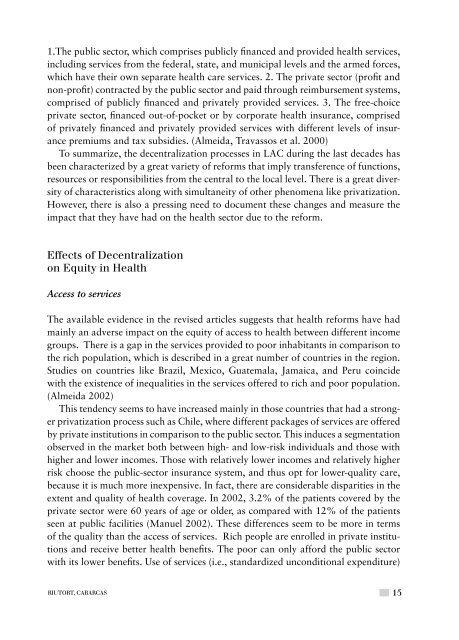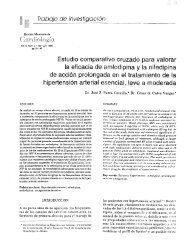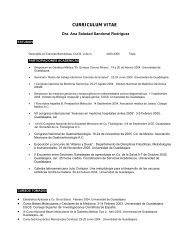Desigualdad Social y Equidad en Salud: Perspectivas Internacionales
Desigualdad Social y Equidad en Salud: Perspectivas Internacionales
Desigualdad Social y Equidad en Salud: Perspectivas Internacionales
- No tags were found...
You also want an ePaper? Increase the reach of your titles
YUMPU automatically turns print PDFs into web optimized ePapers that Google loves.
1.The public sector, which comprises publicly financed and provided health services,including services from the federal, state, and municipal levels and the armed forces,which have their own separate health care services. 2. The private sector (profit andnon-profit) contracted by the public sector and paid through reimbursem<strong>en</strong>t systems,comprised of publicly financed and privately provided services. 3. The free-choiceprivate sector, financed out-of-pocket or by corporate health insurance, comprisedof privately financed and privately provided services with differ<strong>en</strong>t levels of insurancepremiums and tax subsidies. (Almeida, Travassos et al. 2000)To summarize, the dec<strong>en</strong>tralization processes in LAC during the last decades hasbe<strong>en</strong> characterized by a great variety of reforms that imply transfer<strong>en</strong>ce of functions,resources or responsibilities from the c<strong>en</strong>tral to the local level. There is a great diversityof characteristics along with simultaneity of other ph<strong>en</strong>om<strong>en</strong>a like privatization.However, there is also a pressing need to docum<strong>en</strong>t these changes and measure theimpact that they have had on the health sector due to the reform.Effects of Dec<strong>en</strong>tralizationon Equity in HealthAccess to servicesThe available evid<strong>en</strong>ce in the revised articles suggests that health reforms have hadmainly an adverse impact on the equity of access to health betwe<strong>en</strong> differ<strong>en</strong>t incomegroups. There is a gap in the services provided to poor inhabitants in comparison tothe rich population, which is described in a great number of countries in the region.Studies on countries like Brazil, Mexico, Guatemala, Jamaica, and Peru coincidewith the exist<strong>en</strong>ce of inequalities in the services offered to rich and poor population.(Almeida 2002)This t<strong>en</strong>d<strong>en</strong>cy seems to have increased mainly in those countries that had a strongerprivatization process such as Chile, where differ<strong>en</strong>t packages of services are offeredby private institutions in comparison to the public sector. This induces a segm<strong>en</strong>tationobserved in the market both betwe<strong>en</strong> high- and low-risk individuals and those withhigher and lower incomes. Those with relatively lower incomes and relatively higherrisk choose the public-sector insurance system, and thus opt for lower-quality care,because it is much more inexp<strong>en</strong>sive. In fact, there are considerable disparities in theext<strong>en</strong>t and quality of health coverage. In 2002, 3.2% of the pati<strong>en</strong>ts covered by theprivate sector were 60 years of age or older, as compared with 12% of the pati<strong>en</strong>tsse<strong>en</strong> at public facilities (Manuel 2002). These differ<strong>en</strong>ces seem to be more in termsof the quality than the access of services. Rich people are <strong>en</strong>rolled in private institutionsand receive better health b<strong>en</strong>efits. The poor can only afford the public sectorwith its lower b<strong>en</strong>efits. Use of services (i.e., standardized unconditional exp<strong>en</strong>diture)Riutort, Cabarcas15
















